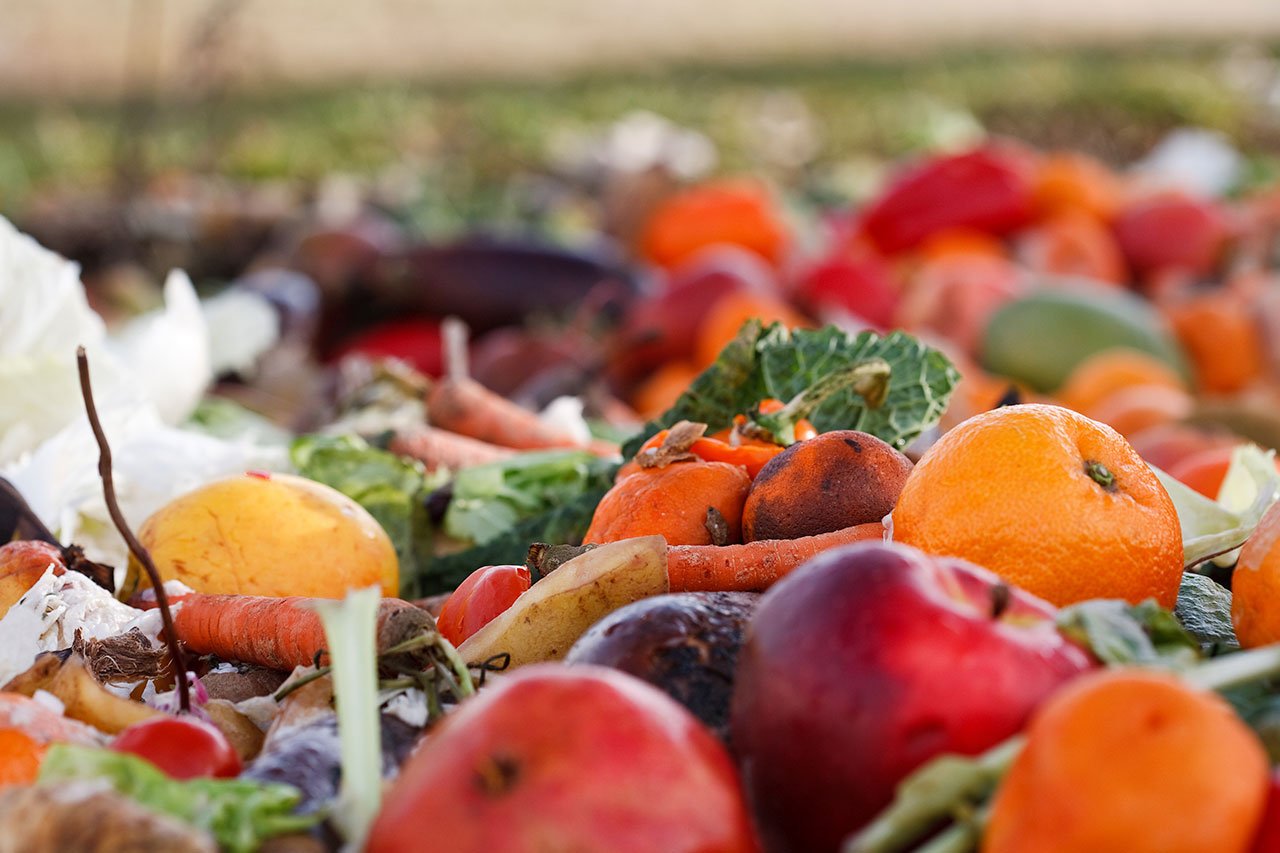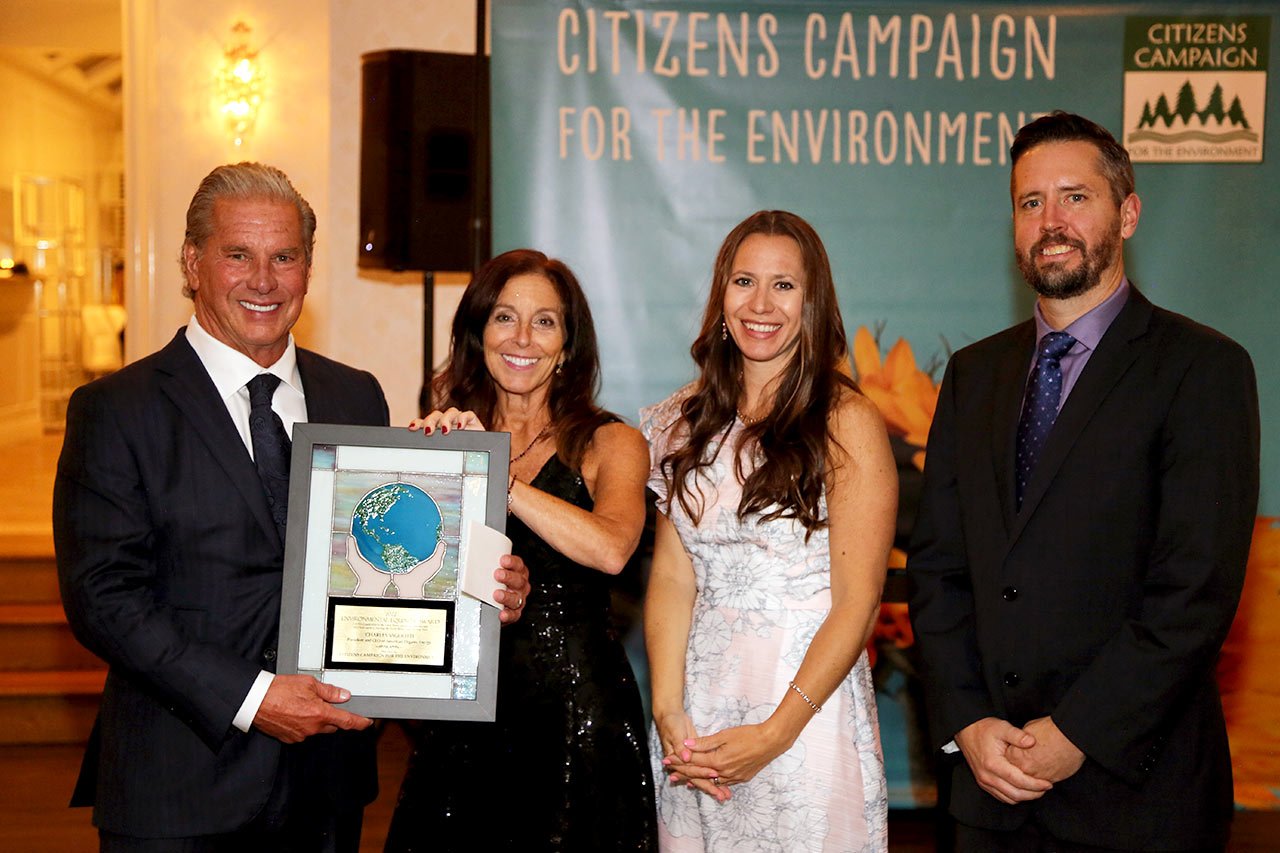"Let’s feed people, not landfills.”
This simple, yet revolutionary concept resonates perhaps even more so today than when those seven syllables were first introduced to the public by then-U.S. Environmental Protection Agency (EPA) Administrator Gina McCarthy in 2015.
She and U.S. Department of Agriculture Secretary Tom Vilsack were announcing the country’s first-ever national food waste reduction program, punctuated by its ambitious goal of no less than a 50-percent slashing by 2030.
Its overall mission: to prevent and reduce wasted food—aka food scraps—and other organic materials from ending up in landfills and instead, utilizing its inherent renewable energy-producing powers to combat global warming and pollution, simultaneously protecting mankind’s collective future in the process.
“By reducing wasted food in landfills, we cut harmful methane emissions that fuel climate change, conserve our natural resources, and protect our planet for future generations,” she explained. “Today’s announcement presents a major environmental, social and public health opportunity for the U.S., and we’re proud to be part of a national effort to reduce the food that goes into landfills.”
The critical component of such an undertaking? Anaerobic digestion—a once-inside-the-park term relegated to technical conversations between sanitation workers within monolithic municipal sewage plants and wastewater treatment facilities. This all-natural process has since risen in popularity and comprehension in recent years, primarily due to its innate capabilities as a renewable or “green” energy source, and its vast potential benefits for municipalities and various associated industries, the environment, and the global society, overall.
Key to the fulfillment of the EPA’s strategic and programmatic goals has been proliferation in the development and efficacies of such systems, and their implementation across the country.
Anaerobic digestion, as EPA Administrator McCarthy and her colleagues all but declared, might just be mankind’s environmental savior—a way to cease the historical misuse and depletion of vital planetary food sources and natural resources, and a sustainable means of homeostatic survival.
The best part: These redeeming powers are literally hardwired into the DNA of the infinite microorganisms that share the planet with us. In other words: The solution lives among us and can never be depleted.
Yet, before delving into all the mechanics and diverse, still-evolving technologies and applications of this elemental process, it’s important to understand its fundamentals.

What Is Anaerobic Digestion?
Anaerobic digestion consists of multiple natural biological processes characterized by microorganisms breaking down (or eating) biodegradable aka “organic” material—plant or animal matter—without the presence of oxygen. These all-natural mechanisms create biogas—an extraordinary cocktail of various gaseous substances primarily comprised of methane and carbon dioxide, but also miniscule amounts of water vapor and other gases.
This combustible anaerobic end product possesses a wide range of uses, particularly to create energy. Biogas generates heat and/or electricity when ignited, and can further be transformed into vehicular fuels and renewable natural gas. (More on that later.) Other material left over following anaerobic digestion is known as “digestate”—typically a wet combination that can be separated into liquids and nutrient-rich solids.
Anaerobic digestion is consequently utilized by an ever-growing industry of so-called “green” and/or renewable energy companies and businesses, most significantly throughout the past several years, anaerobic digesters. Such facilities harness these natural processes’ plentiful positive powers as a more effective, efficient and environmentally sound means of commercial and residential waste disposal that simultaneously combats mass pollution and even global warming.
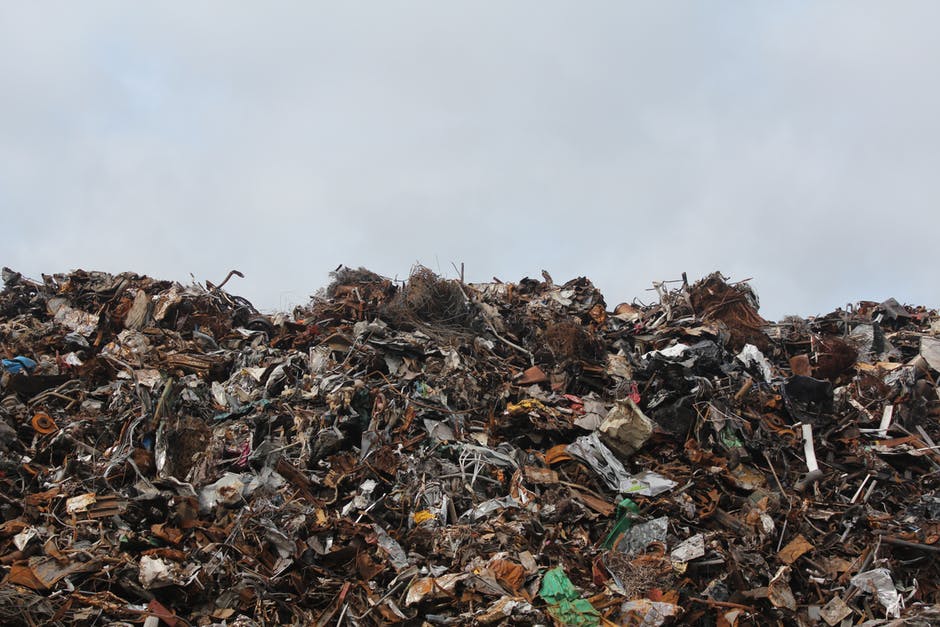
Anaerobic Digestion Conversion Sources, aka “Feedstocks”
Perhaps most historically associated with its utilization as a conversion system employed within sewage plants and wastewater treatment facilities handling human waste, or others that process animal manure, for example, ever-evolving technological advancements have given birth to an even greater smorgasbord of practical and potential conversion opportunities, thus widening the possibilities of both anaerobic digestion’s applications and beneficial results across multiple industries once deemed outside its scope.
These burgeoning, and even now well-established anaerobic digestion adoptions are presently capable of converting not merely the aforementioned wastewater and solid wastes from municipalities and livestock on the local, state, and even national scale, but additionally, from high-strength industrial wastewater and residuals, including fats, oils and greases—dubbed “FOG” sources.
Perhaps most significantly, such renewable energy and planetary beneficial derivatives can derive from other everyday organic waste streams, including, more and more, the never-ending flow of food waste, more commonly referred to as “scraps,” which too often slide from our dinner tables into our garbage cans, and ultimately are heaped into the world’s already overburdened landfills.
But wait for it...
Due to this broad spectrum of emerging anaerobic digestion technologies, such transformations can now occur 24/7—manipulating a near-constant flow of these all-natural fundamental building blocks for a vast amount of practical purposes.
Other ingredients of this transformational recipe, such as separated digested solids, for example, also result in an equally diversified array of additionally useful byproducts, including: compost and fertilizer, dairy cow bedding, and much, much more.
To fully comprehend anaerobic digestion’s remarkable capabilities—as well as its recent appeal—it’s important to first understand the exact biological processes at its core.
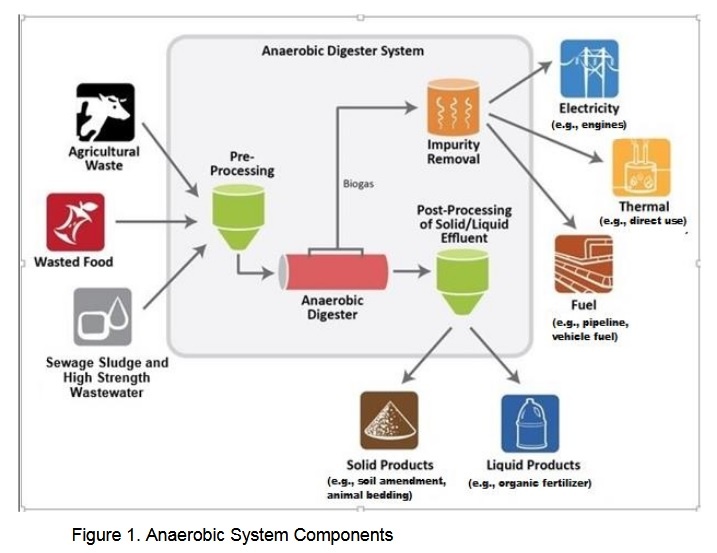
How Does Anaerobic Digestion Work?
Anaerobic digestion is possible due to bacterial hydrolysis, its initial step. Essentially, this is the breaking down of insoluble organic polymers, such as carbohydrates, for example, which then become food for other bacteria—called “acidogenic” microorganisms. More colloquially known as fermentation, in this stage, these microbes transform the amino acids and sugars created into hydrogen, ammonia, carbon dioxide, and organic acids. The latter is converted into acetic acid by "acetogenic" microbes, along with additional amounts of the former substances. Another type of microorganism—called “methanogens”—change these into methane gas and carbon dioxide.
Sound complicated? Not so much, really. Think about swamp gas—that not-so-pleasant smell emanating from decaying plant matter—or even those embarrassing moments after eating cabbage or broccoli. (Yikes!) Same principle.
Uses of Anaerobic Digestion Byproducts
As aforementioned, the resulting biogas and solids from anaerobic digestion possess many diverse uses. Among these, this renewable energy source can provide:
- Heat for homes and businesses via a natural gas pipeline—fueling furnaces and boilers and other related equipment
- Nutrient management alternatives
- Power for engines and/or turbines
- Soil improvement methodologies—such as fertilizers
- Fuel for alternative-fuel vehicles
- Methane emissions reductions
- Electricity—including applications within combined heat/power systems
- Diversion of organic wastes
- Building materials—such as fibreboard, or even flower pots
- Self-sufficiency
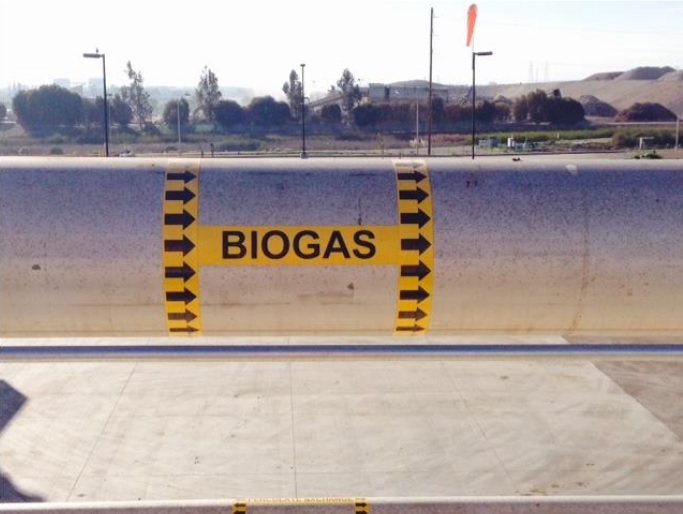
Biogas—Mother Nature’s Miracle Fuel
Exactly how biogas is utilized and how efficient it is depends on a host of factors, especially its quality. The higher it is, the greater its energy value and subsequent potential. Removing water vapor, carbon dioxide and other trace contaminants increases this value. Lower quality biogas can still be used in less-efficient engines, such as internal combustion engines, for example, however, it’s the higher-grade biogas that can find a home within natural gas pipelines to commercial and residential properties.
The top-notch biogas can also be upgraded into liquefied natural gas and/or compressed natural gas—which can fuel trucks and automobiles.
Genesis & Wider Applications of Anaerobic Digestion
Prior to the EPA’s 2015 announcement heralding anaerobic digestion’s capacity to help alter the future of food waste disposal on such a wide scale, several of the agency’s offices had already been apprised of its potential applications through a variety of projects. This included its offices of Air and Radiation (OAR), Solid Waste and Emergency Response (OSWER), Office of Water (OW) and Research and Development (ORD). Such an assortment speaks volumes about anaerobic digestion’s possibilities regarding environmentally friendly functions, and as these became more apparent, the agency received more and more inquiries about the associated technologies—from both internal and external sources.
In response, the EPA formed several teams to focus on anaerobic digestion’s technical and scientific components, learn more about its prospects, and spread the word.
Yet artificial manipulation of anaerobic digestion is by no means a “new” technology. The process itself has naturally existed for tens of millions of years, and the first manmade anaerobic digester facility dates back to the 19th century, in India.
According to the EPA, as of 2015, there were more than an estimated 1,270 sewage treatment facilities throughout the United States producing biogas, an estimated 247 anaerobic digester systems at commercial livestock farms, and nearly 100 such facilities that process food-based materials.
These figures are continuously rising, and only begin to scratch the surface of all this omnipresent, environmentally protective process.
It’s a positive life cycle that feeds upon itself, too. As more and more municipalities, public and private companies, college campuses, and even governments learn about the many advantages of anaerobic digestion and adopt its processes, the whole world benefits!
Anaerobic Digesters
Anaerobic digesters, such as Yaphank, New York-based American Organic Energy (AOE), are facilities that, controlled through engineering, specialized machinery, structures and chemistry, harness anaerobic digestion’s native mechanics to produce gas and solid and liquid digestate. These systems can also reduce pathogens and waste volumes and minimize vector attraction and unpleasant odors.
As explained earlier, microbes feed on the sewage sludge, human or animal refuse, or food scraps and other organics in the absence of oxygen. Next, the associated chemical reactions occur: hydrolysis, fermentation or acidogenesis, acetogenesis, and finally, methanogenesis. In a nutshell, complex organic matter (carbohydrates, proteins and fats) becomes soluble organic molecules (sugars, amino acids and fatty acids), which then becomes methane and carbon dioxide, or as aforementioned, biogas. Such technologies profoundly impact our local, regional, national and global environment in several significant ways.

Environmental Benefits
Climate Change
Anaerobic digestion facilities help reduce harmful so-called “greenhouse gas” or carbon emissions—a contributing factor to global warming—by capturing and combusting methane, preventing its ascension into the atmosphere and preventing it from trapping additional sunlight and heat. Anaerobic digestion generates renewable energy, thus reducing dependence on pollutant and climate-warming fossil fuels.
Nutrient-rich digestates applied to the soil sequesters carbon emissions. Overall, anaerobic digestion diverts decaying organics from landfills, consequently decreasing methane gas production and release.
Clean Water
Anaerobic digestion helps keep our waterways and bodies safe from contaminants by providing an environmentally avenue for sewage and wastewater treatment, thus diverting such substances and its toxic properties from entering the aquatic environment, while simultaneously recovering and repurposing beneficial nutrients.
The process by nature consolidates those, which in large quantities, would otherwise cause eutrophic conditions and harmful algae growth in water bodies, such as phosphorus and nitrogen, thus helping prevent oxygen depletion and its consequential mass marine life die-off, such as those witnessed more and more throughout the world. These, too, can be recovered and repurposed for more beneficial uses.
Overall, the utilization of anaerobic digestion therefore improves water quality, and, with energy recovery systems, many anaerobic digester facilities can offset their own energy consumption! This is a win-win, all around.
Sustainable Development
Anaerobic digestion supports sustainable communities by reducing the consumption of fossil fuels and producing localized sources of renewable electricity, heat and fuel. This can generate much-needed revenue for local economies, reduce associated energy costs and wasted food volumes, and through the further repurposing of solid and liquid byproducts as fertilizer, replace harmful, traditionally used chemicals.
Pollution Prevention
Through its diversion of organic waste away from landfills, anaerobic digestion reduces hauling costs and nutrient runoff—whereby detrimental nutrients leech into nearby waterways, bodies, and even groundwater drinking supplies. Implementing byproducts into the soil can help scale back, or even eliminate the use of pesticides and related products, and even help improve water retention.

American Organic Energy
As more and more towns, cities, colleges, universities, and even entire governments recognize and adopt anaerobic digestion as a means of fighting pollution, climate change, food waste and so many other environmentally destructive practices, more and more anaerobic digesters and related facilities will be necessary to process the associated waste streams.
American Organic Energy, based in Yaphank, New York, is but one such destination.
A month after the EPA’s McCarthy and Department of Agriculture’s Vilsack made their joint war declaration against food waste, New York State Gov. Andrew Cuomo made a proclamation of his own—singling out American Organic Energy.
“This exciting project is yet one more way we’re investing in a sustainable energy future and building a cleaner and greener New York,” he said. “This first-of-its kind project for Long Island and the greater New York metropolitan area will build upon this administration’s commitment to expand the state’s use of renewable energy and reduce our carbon footprint.”
The proposed state-of-the-art facility will welcome more than 180,000 tons of local food waste per year, primarily from Brooklyn. Out of these discarded scraps, its anaerobic digester will create carbon-neutral, sustainable and renewable biogas and electricity, as well as nutrient-rich water and plant food, compost, and environmentally friendly fertilizer.
Besides this astounding amount of food waste, which would otherwise have been transported to a landfill and left to rot—contributing to ecologically destructive greenhouse gas emissions, both via the methane created by its decay and the fossil fuels burned in its transportation—American Organic Energy will also process 10,000 tons of grass clippings and 30,000 tons of fats, oils and greases (FOG).
Collectively, this amounts to more than 220,000 tons of waste that will be transformed into clean energy and compost—and a reduction in greenhouse gas emissions of more than 40,000 tons annually—generating 6.0 MW of electricity.
The EPA’s 50-percent reduction by 2030 is but one of a multitude of similarly aggressive initiatives to maximize all that anaerobic digestion has to offer. New York City is another with lofty goals that benefit its residents and the global environment as a whole, and shares that target—though aiming for a waste reduction of an astounding 90 percent as part of Mayor Bill de Blasio’s aptly named “Zero Waste” program.
NYC’s pilot program rolled out in 2014 and implementation is presently in full swing across all five boroughs, poised to administer curbside organics waste pickup services or access to convenient drop-off sites to all residents by the end of 2018.
Similar initiatives have been implemented across the globe.
Nicknamed “The Compost King of New York” by New York Times Magazine, which profiled he and American Organic Energy’s environmentally conscious vision, AOE Chief Executive Charles Vigliotti responded to Gov. Andrew Cuomo’s praise by proclaiming his unwavering commitment to a cleaner, greener future:
"We are dedicated to building nothing less than the most sophisticated food waste processing facility in the world.”
Contact Us Today to learn more about American Organic Energy’s proposed state-of-the-art anaerobic digestion facility located in Yaphank, NY, the anaerobic digestion process in general, and how you can become an AOE Partner!





